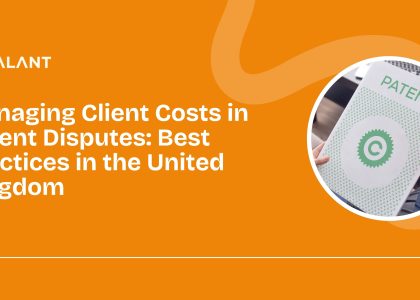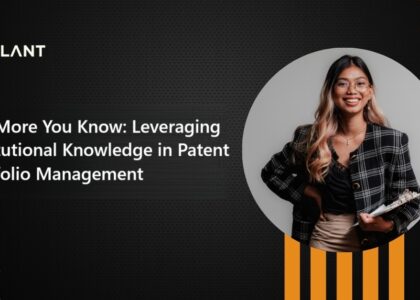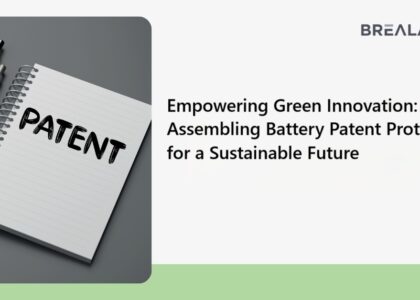Patents: what startups need to know
When you develop something, your major goal is to spread the word, make a profit, or sell the product while avoiding plagiarism, infringement, or disparaging. This is where patents come into play, as they create a barrier between you and your competition. We’ve all been disappointed when someone tries to pass off your concept as their own. Intangible assets gain greater value than physical ones as information technologies and knowledge-based industries flourish. Patents grant exclusive property rights to the owner. It not only allows you to protect your idea but also generates a positive image for your company, delivers a larger reward on your investment, allows you to earn additional revenue, and improves your capacity to obtain finance at a fair cost.
- Patents relate to technical innovations.
To be patented, an innovation must be original and imaginative and solve a technical problem. At least in Europe, solutions to abstract problems or business challenges with no technological content are not patentable. To protect your branding, you should look into registered trademarks instead. Consider registered designs if you wish to preserve the appearance of an object or user interface. These are separate issues.
- You must keep ideas confidential before filing a patent application…
When you first file a patent application, your idea must be unique (and innovative) to be granted a valid patent. It is not novel if the information has been disclosed to anyone else who is not bound by confidentiality, and you must exercise extreme caution in this regard. It may even be made public if someone can demonstrate that the public might have seen the invention and how it works even if they did not. Before filing an eligible patent application, you must not have made a non-confidential disclosure in the United Kingdom or before the European Patent Office. It is occasionally possible to make confidential disclosures.
- …although there are limited exceptions
If you recently disclosed an innovation without first filing a patent application, you may still be able to acquire protection in a few nations with grace periods. For example, the United States, Canada, and Australia all have one-year grace periods, which means that disclosures made by the inventor(s) in the year before filing a patent application are normally ignored. If this applies to you, get guidance immediately because the legislation is complicated, and it is frequently best to file as soon as possible. Although there is no as-of-right grace period for patents in the UK, registered design protection can sometimes be obtained by filing up to a year after the first disclosure.
- Many computer-implemented innovations are patentable.
It is commonly known that computer programs are not patentable under UK and European patent law. However, this constraint is narrower than it may appear. In general, it should be patentable if a computer-implemented invention solves a technical problem, such as controlling a device or analyzing physical data. It also meets the standard conditions of being innovative and inventive. Many software startups are attempting to tackle business problems rather than technical ones, but software and other companies developing technological advances should investigate whether patents are relevant to their industry. Here’s a more in-depth look at the patentability of computer software.
- Patents are property rights arising from the invention.
Patents are examples of intellectual property rights. Like other property rights, they can be purchased and sold, licensed, and even mortgaged. Startups must have unambiguous ownership of their intellectual property rights and be able to demonstrate them. To determine the first owner of the right to a patent, identify the inventor or inventors. This is the individual or people who created the invention and no one else. Determine whether inventors have applicable employment contracts or other arrangements that transfer rights to others. This tells which party or parties are eligible for a patent. If this is not quite evident, seeking guidance and dealing with any concerns is usually advisable as quickly as possible.
- Patents are obtained through an application process.
Patents are scrutinized to see whether they are original and innovative, as well as whether they meet other standards. This means that if you come across a patent document important to your work, such as when a rival characterizes a product as patented or patent-pending or if you explore patent databases, you must first determine whether you are looking at an application or a granted patent. We frequently see people make poor business judgments because they conflate the two. A patent application can contain anything you want, and it will be published, but whether it is granted is another story. If you read a granted patent that may interest you, you should check to see if the renewal costs have been paid.
The patent application procedure often takes several years, ranging from 4 to 7 years. It is possible to speed it up or slow it down. Getting a patent rapidly can be monetarily beneficial in some cases, but it incurs costs. Sometimes applicants try to keep patent applications pending for a long time to give them more options if an infringer comes along or to delay costs (or to put off the day when an application is finally refused…)
- Patent applications are published after 18 months.
In most cases, Intellectual Property Offices keep patent applications confidential and publish them on the internet 18 months after their filing date, assuming they are ongoing. When you publish your application, some of your information becomes public. It becomes prior art for future patent applications, which might be helpful in defense (or a problem if it affects another later application of your own). You cannot expect to acquire valid patent protection if you leave out a critical enabling component of the invention you are attempting to protect. But, you can obtain a search report and get a good indication of what level of protection you will receive in time to withdraw your application and avoid its publication if you do not believe the breadth of protection warrants the disclosure.
- Patents are time-limited.
Patents have a maximum duration once awarded. In many nations, the maximum duration is 20 years from the filing date. In most countries, patents must be renewed regularly, or they will expire before the end of their potential term.
- Patents are territorial.
Patents cover specific territories; for example, a UK patent, which the UK Intellectual Property Office examines, covers the UK; a European patent, which the European Patent Office examines, can cover more than 38 European territories (depending on validation decisions made on the grant); a Japanese patent, which examined by the Japanese Patent Office, covers Japan, and so forth.
When obtaining your patent, you can normally start by filing a patent application in a single country and then file internationally (with a ‘priority claim’) at any time within the next 12 months.
Other people’s patents can only affect your freedom to operate in the countries where they have been or may be awarded. Still, everything published in a patent, or any other document, anywhere in the past can harm your ability to obtain a patent.
- Patents have claims which set out the scope of protection.
Patents and patent applications are typically lengthy papers with extensive technical explanations. The claims, usually at the end, define the real scope of protection a patent gives. While examining patents to determine whether your ideas are novel and inventive, you must study the full document. You must analyze the claims when reading patents to investigate freedom to operate. We are constantly questioned why someone appears to have patented something already known; surely this cannot be right? Even if practically everything disclosed in the patent is known, the claims usually have a significant novel element.
- Having a patent does not give you freedom-to-operate.
A patent can be obtained for a novel and innovative product or procedure. Yet, an idea can be novel and inventive while still falling within the scope of someone else’s prior patent, or other patents may apply to your firm. A patentability search is required to determine the likelihood of acquiring a patent. A freedom-to-operate search is required to assess freedom-to-operate. They are opposed to one another.
- Patents are expensive to obtain…
Yet, most of the cost of getting a patent is postponed until several years after a patent application is filed. Startups typically need to ensure that they have enough cash for the first stage of the application procedure; they hope to have acquired significant investment or sold goods before the costs of fighting for a grant with numerous Patent Offices or renewal fees become due. Compared to the whole expense of having a product ready for market and then selling it, the cost of a patent appears excessive when setting up a company with your own credit card. The cost of getting patents is one that your competitors will confront in many industries.
- Patents get you money…
…by acquiring your investment. That is their primary short-term value to new businesses. You are unlikely to find yourself seeking to enforce a patent in the early phases of a startup (for one thing, patents often take several years to grant) or ever (litigation is luckily rather unusual). Still, you will be attempting to establish a corporation with defensible IP. Your future company, or a large corporation you may need one day exit, may enforce the patent many years from now. Patents frequently keep competitors out of markets even when they are never challenged. Someone else’s due diligence may include your patent. But in the early stages of a business, patent applications are all about building a story and a future position that can be presented to investors.
- You don’t need to have built a prototype.
A valid patent must adequately detail how to implement the idea. Many inventions can have a proper disclosure written without having created a prototype. Yet, in other sectors, particularly medicine, obtaining a patent without experimental data at the time of filing might be challenging.
- Patents are a great source of technical information.
Do you want to know how your competitors manufacture their products? Are you attempting to tackle a technological challenge that you believe people in other sectors have already solved? Patent publications are an excellent source of technical information, but only a small percentage are awarded and in force. Startups should leverage them as a source of technical ideas. Few do!
- Patents, like businesses, vary a lot.
Some patents are broad; some are narrow; some are valid; some are invalid; some may be broad and valid, but it is difficult to tell; some are valuable; some are worthless; some are valuable briefly at one stage in a business; and some patents are the only value left in a business that fails in the marketplace. Some patents are successfully enforced through the courts, while others are not; some patents (many, in fact) successfully deter competitors, while others do not; some patents generate license revenue, while most do not; patents are irrelevant for some businesses, essential for others; and patents may be useful later for some businesses.
It would help if you did not base your judgments on anecdotes from other people’s experiences because business scenarios are never the same twice. Consider how they might apply to your specific situation!
There is much more to know about patents than above, but these are the fundamentals. Please get in touch with us or write directly to one of our patent attorneys if you have any questions.








